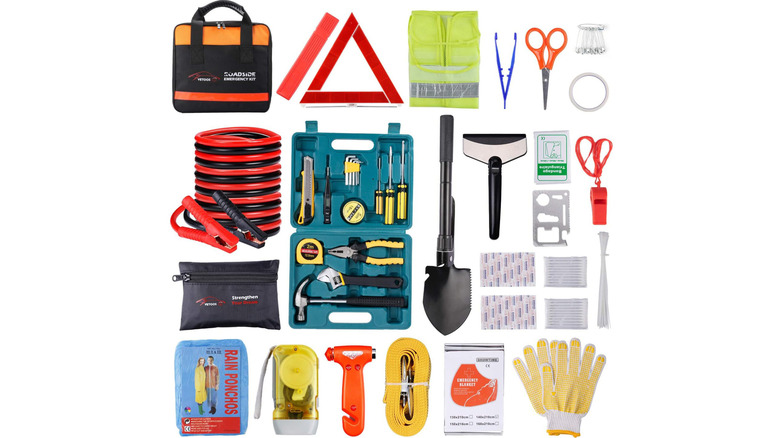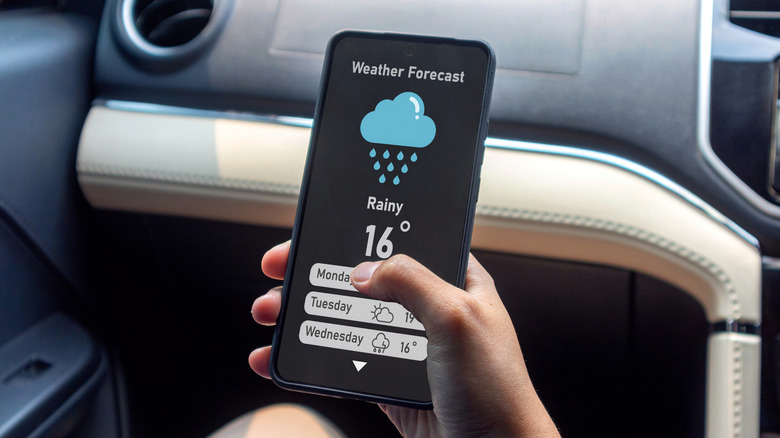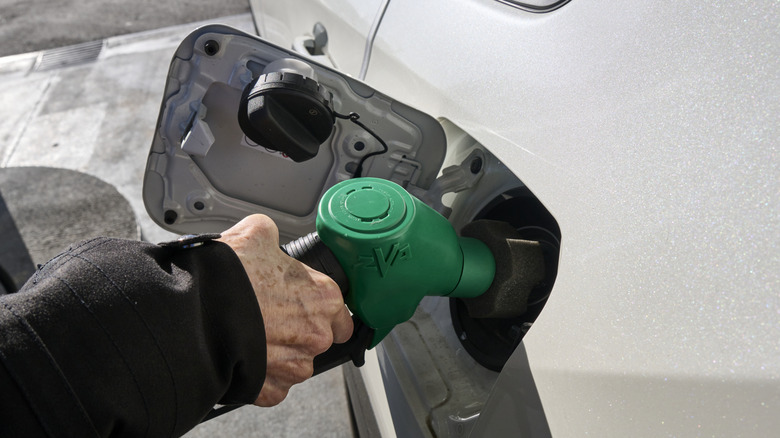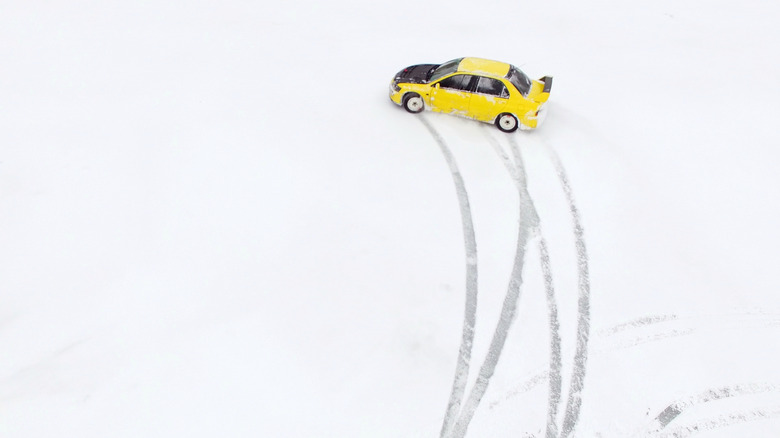5 Winter Driving Tips To Keep You Safe While You Travel In Inclement Weather
We may receive a commission on purchases made from links.
Winter is upon us in the northern hemisphere, bringing snow, ice, wind, and other weather conditions that make driving treacherous. SlashGear has always been here to provide tips for winter driving, including letting you know not to warm your car up for more than about a minute before driving. That gives you time to clear your windshield of snow and ice, which keeps you and other drivers safe. A simple and inexpensive plastic scraper is the best tool for this job, and a telescoping snow brush can come in handy if you have a large SUV.
Using winter or all-season tires can keep your car on the road when the weather gets cold and sloppy, but the right rubber is of no help if your driving habits don't change with the seasons as well. Here are a few things to keep in mind when taking to the roads this winter that will keep you, your family, and the motorists around you safe.
Carry an emergency kit
Equipping yourself for potential emergencies can save you time, money, and even your life. The National Highway Transportation Safety Administration and Federal Emergency Management Association recommend carrying the following items in your car during the winter: jumper cables, blankets, food, water, medicine, a first aid kit, sand or kitty litter for traction, emergency flares and a flashlight, a shovel, and an ice scraper or snow brush.
The Vetoos emergency roadside and tool kit usually sells on Amazon for $64.99 but as of this writing is on sale for $49.99 — a 23% discount. It has most of the items recommended by the two federal agencies, plus a tow strap, an emergency whistle, a basic tool kit, and a pair of textured work gloves. If you supplement the kit with a pack of 12 mylar space blankets for $15.95, you'll have extras to hand out to other motorists in case a severe storm shuts down a highway.
Check the forecast and keep others informed
Information is as valuable as equipment in keeping you safe when driving in potentially dangerous weather. Use one of SlashGear's recommended iPhone and iPad weather apps to check the forecast before you head out on your journey, and make sure someone knows your planned route and travel schedule. Make sure your cell phone is charged before you leave, and consider purchasing one of SlashGear's top-ranked power banks as an on-the-go charging solution.
The Anker PowerCore+ sells for $50.99 on Amazon and has a 26,800 mAh battery, one 45-watt USB-C port, and two 15-watt USB-A ports. A more powerful solution is Anker's Prime Power Bank, which costs $129 and has two USB C and one USB A port with a combined 250 watts of charging power and a 27,650 mAh battery. These devices will help keep your phones powered up even if your car becomes disabled, ensuring you are able to contact emergency services for help and let loved ones know that you are safe.
Prepare your car for the trip
The NHTSA recommends filling your car's tank with fuel before heading out on a winter trip, or fully charging your battery if you drive an electric vehicle. Before you leave, you should also check your coolant and washer fluid levels, and consider adding a winter washer fluid like Prestone's AS658 de-icer and bug wash to your washer fluid reservoir. Make sure your wiper blades are in good shape, and replace them if necessary.
Your car's battery won't be as effective when the temperature drops, so make sure your terminal connections are clean and tight and your battery is fully charged. Give your tires a visual inspection for wear and damage, and check their pressure with a gauge, since the cold air might make the pressure drop below a safe level. You should also do a quick check to make sure all your car's lights and signals are working properly.
Drive slowly and carefully
It's critical to adjust your driving to the conditions. Slow down, and increase your following distance to at least five seconds. This will give you extra time to react when the road is slippery, and more room to avoid a potential crash. Accelerate and brake slowly and smoothly, and take turns and curves carefully and gently. If you're driving on roads that aren't getting much sunlight or seeing steady traffic, you'll need to be aware of a phenomenon known as "black ice." This is a thin, slippery layer that forms when roadways are right around freezing temperature and is nearly invisible to drivers.
Black ice is transparent, but you can sometimes detect its glossy sheen on the road ahead of you. Another sign that black ice is on the road is if cars ahead of you are losing traction unexpectedly. If you do hit a patch of ice (black or otherwise), resist the urge to apply the brakes, and keep the steering wheel pointed straight ahead. If your car starts to spin, turn the wheel gently in the direction of the skid, again keeping your foot off the brake pedal. If possible, shift into a lower gear; this might give your car more traction. If you're driving in mountainous regions that often get heavy snowfall, you might be required to carry snow chains. If that's the case, you should practice putting them on and taking them off before you leave for your trip so you are sure you can do so quickly and safely.
If you get stuck, stay with your car
If you do end up in the unfortunate situation of being stranded on the side of the road in a winter storm, resist the urge to get out of the car and go in search of help. First, attend to any injured passengers in your car and call 911 if anyone needs emergency treatment. Place a lit flare or warning triangle behind your car, or tie a colored cloth (ideally a red one) to your door or antenna to signal that you need help.
The National Weather Service recommends running your engine for ten minutes out of every hour to generate enough heat to keep you warm, but if you do this, make sure that there is no snow blocking your tailpipe and you crack a window open to avoid carbon monoxide poisoning. It's also a good idea to keep your dome light on to indicate to others that you need help, and your hazard lights will echo that signal and help prevent other drivers from colliding with your car.
How we chose the linked products in this article
You'll notice that throughout this article are several links to products available on Amazon that could be helpful for driving in winter weather. To select these items, we first consulted SlashGear's existing product reviews for relevant products, then filtered Amazon's product listings for items with average customer ratings of 4.4 stars or more and at least 1,250 total reviews. We read through these reviews to make sure there were no significant issues that would compromise your safety, and consulted the manufacturer's website for the Anker products to make sure there had been no recalls issued for either power bank we recommended.






